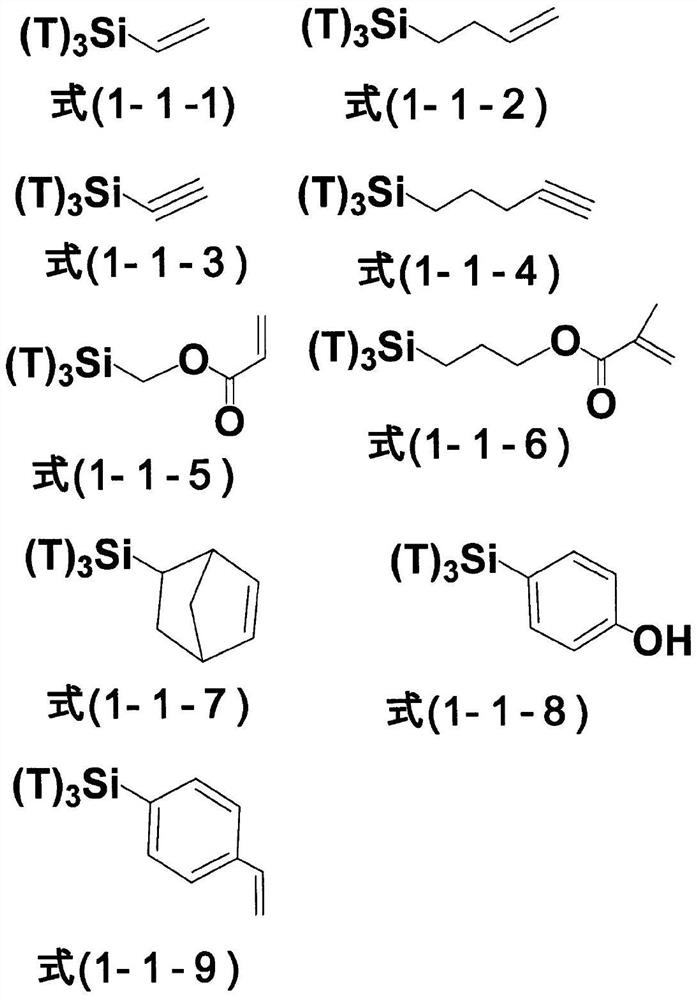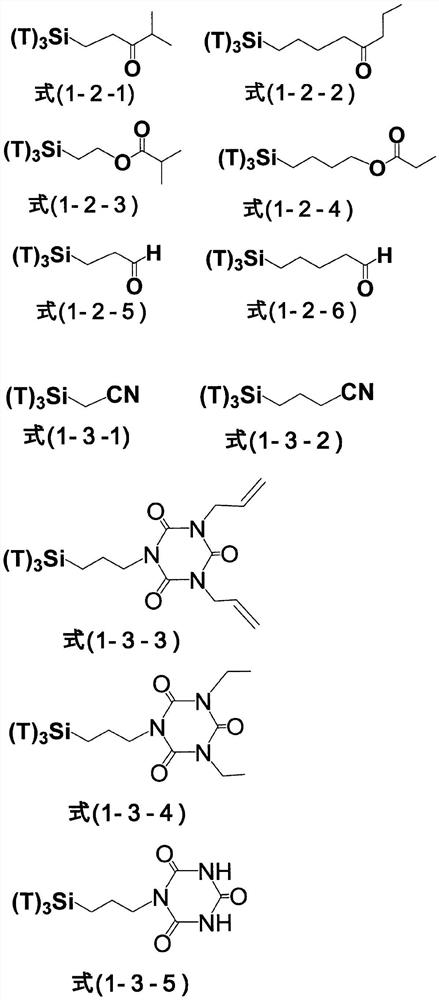Composition for forming photocurable silicon-containing coating film
A photocurable and coating technology, which is applied in optics, photomechanical equipment, photosensitive material processing, etc., can solve the problem of focal depth reduction and achieve the effect of suppressing diffuse reflection and suppressing height difference
- Summary
- Abstract
- Description
- Claims
- Application Information
AI Technical Summary
Problems solved by technology
Method used
Image
Examples
Synthetic example 1
[0222] Tetraethoxysilane 25.1g (containing 70 mol% in all silanes), phenyltrimethoxysilane 1.71g (containing 5 mol% in all silanes), 4.60g methyltriethoxysilane (containing 5 mol% in all silanes) Contain 15 mol% in silane), acryloyloxypropyltrimethoxysilane 4.03g (contain 10 mol% in all silanes), acetone 53.1g join in the flask of 300ml, utilize magnetic stirrer to carry out while mixing solution While stirring, 11.5 g of 0.01M aqueous hydrochloric acid solution was added dropwise. After the addition, the flask was transferred to an oil bath adjusted to 85°C and refluxed for 240 minutes. Then, 70 g of propylene glycol monomethyl ether acetate was added, and acetone, methanol, ethanol, hydrochloric acid, and water were distilled off under reduced pressure, and concentrated to obtain a hydrolysis-condensation product (polymer) solution. Furthermore, propylene glycol monomethyl ether acetate was added, and the solvent ratio was adjusted so that 100% of propylene glycol monomethy...
Synthetic example 2
[0224] 22.0 g of tetraethoxysilane (65 mol% in all silanes), 1.61 g of phenyltrimethoxysilane (5 mol % in all silanes), 12.09 g of acryloxypropyltrimethoxysilane (Containing 30 mol% in all silanes), 53.5 g of acetone were put into a 300 ml flask, and 10.8 g of 0.01M hydrochloric acid aqueous solution was added dropwise while stirring the mixed solution with a magnetic stirrer. After the addition, the flask was transferred to an oil bath adjusted to 85°C and refluxed for 240 minutes. Then, 70 g of propylene glycol monomethyl ether acetate was added, and acetone, methanol, ethanol, hydrochloric acid, and water were distilled off under reduced pressure, and concentrated to obtain a hydrolysis-condensation product (polymer) solution. Furthermore, propylene glycol monomethyl ether acetate was added, and the solvent ratio was adjusted so that 100% of propylene glycol monomethyl ether acetate might become 20 mass % in conversion of the solid residue in 140 degreeC. The obtained poly...
Synthetic example 3
[0226] 8.24g of tetraethoxysilane (25 mol% in all silanes), 1.57g of phenyltrimethoxysilane (5 mol% in all silanes), 25.7g of acryloxypropyltrimethoxysilane (Containing 70 mol% in all silanes), 53.7 g of acetone were put into a 300 ml flask, and 10.6 g of 0.01 M hydrochloric acid aqueous solution was added dropwise, stirring the mixed solution with a magnetic stirrer. After the addition, the flask was transferred to an oil bath adjusted to 85°C and refluxed for 240 minutes. Then, 70 g of propylene glycol monomethyl ether acetate was added, and acetone, methanol, ethanol, hydrochloric acid, and water were distilled off under reduced pressure, and concentrated to obtain a hydrolysis-condensation product (polymer) solution. Furthermore, propylene glycol monomethyl ether acetate was added, and the solvent ratio was adjusted so that 100% of propylene glycol monomethyl ether acetate might become 20 mass % in conversion of the solid residue in 140 degreeC. The obtained polymer corre...
PUM
| Property | Measurement | Unit |
|---|---|---|
| Epoxy value | aaaaa | aaaaa |
| Epoxy value | aaaaa | aaaaa |
Abstract
Description
Claims
Application Information
 Login to View More
Login to View More - R&D
- Intellectual Property
- Life Sciences
- Materials
- Tech Scout
- Unparalleled Data Quality
- Higher Quality Content
- 60% Fewer Hallucinations
Browse by: Latest US Patents, China's latest patents, Technical Efficacy Thesaurus, Application Domain, Technology Topic, Popular Technical Reports.
© 2025 PatSnap. All rights reserved.Legal|Privacy policy|Modern Slavery Act Transparency Statement|Sitemap|About US| Contact US: help@patsnap.com



